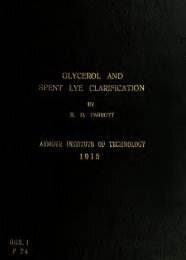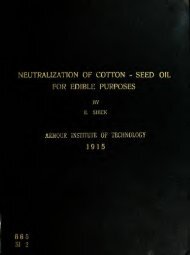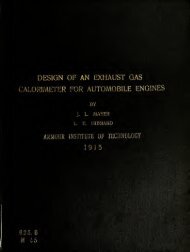ipro 356: plug-in hybrid electric vehicle - Community List - Illinois ...
ipro 356: plug-in hybrid electric vehicle - Community List - Illinois ...
ipro 356: plug-in hybrid electric vehicle - Community List - Illinois ...
You also want an ePaper? Increase the reach of your titles
YUMPU automatically turns print PDFs into web optimized ePapers that Google loves.
Isopomoto IIT EnPRO-<strong>356</strong>, Fall 2006<br />
2.3.2 Solv<strong>in</strong>g the problem<br />
Isopomoto‘s product addresses the problems of <strong>in</strong>creas<strong>in</strong>g oil prices and pollution<br />
by cutt<strong>in</strong>g down the fuel consumption and reduc<strong>in</strong>g emissions. Assum<strong>in</strong>g average<br />
driv<strong>in</strong>g patterns (see table 1), a <strong>plug</strong>-<strong>in</strong> with an <strong>electric</strong>-only range of 20 miles could be<br />
expected to reduce fuel consumption by about one-third as compared to a current <strong>hybrid</strong>.<br />
A <strong>plug</strong>-<strong>in</strong> with a 60 mile range could cut gasol<strong>in</strong>e consumption by about two-thirds,<br />
though battery cost would be nearly three times that of the 20 mile <strong>plug</strong>-<strong>in</strong>.<br />
Electric-Only<br />
Range (miles)<br />
Table 1: Electric-Only Range and Gasol<strong>in</strong>e Sav<strong>in</strong>gs for an Average Driver 6<br />
Gasol<strong>in</strong>e Sav<strong>in</strong>gs Assum<strong>in</strong>g All-<br />
Electric with<strong>in</strong> Range<br />
11<br />
Gasol<strong>in</strong>e Sav<strong>in</strong>gs Assum<strong>in</strong>g<br />
50% Electric over 2X Range<br />
10 21% 19%<br />
20 37% 30%<br />
30 50% 36%<br />
40 60% 40%<br />
50 67% 42%<br />
60 72% 44%<br />
With regard to greenhouse gas emissions, the advantage of <strong>plug</strong>-<strong>in</strong>s over<br />
conventional <strong>hybrid</strong>s is greater <strong>in</strong> areas where <strong>electric</strong>ity is generated with low-carbon<br />
fuels, and much more modest elsewhere. In California, where <strong>electric</strong>ity is<br />
comparatively low-carbon, a <strong>plug</strong>-<strong>in</strong> with a 40 mile range could cut carbon dioxide (CO2)<br />
emissions by one-third. Us<strong>in</strong>g the typical U.S power generation source mix, the CO2<br />
reduction of the <strong>plug</strong>-<strong>in</strong> relative to a <strong>hybrid</strong> would be about 15%. In most locations,<br />
achiev<strong>in</strong>g a major CO2 advantage from <strong>plug</strong>-<strong>in</strong>s will require greatly reduc<strong>in</strong>g power<br />
sector carbon emissions. 7<br />
From a public health perspective, the benefits of <strong>plug</strong>-<strong>in</strong>s are, aga<strong>in</strong>, highly<br />
dependent on <strong>electric</strong>ity generation source. Charg<strong>in</strong>g on the grid today, a <strong>plug</strong>-<strong>in</strong> would<br />
emit 5% to 40% less oxides of nitrogen (NOX) than a <strong>hybrid</strong>, depend<strong>in</strong>g on geographic<br />
location. Sulfur oxide (SOX) emissions associated with a <strong>plug</strong>-<strong>in</strong> would be much higher<br />
6 Source: ACEEE based on 2001 NHTSA data, as tabulated by ORNL (2006)<br />
7 Source: American Council for Energy-Efficiency Economy













